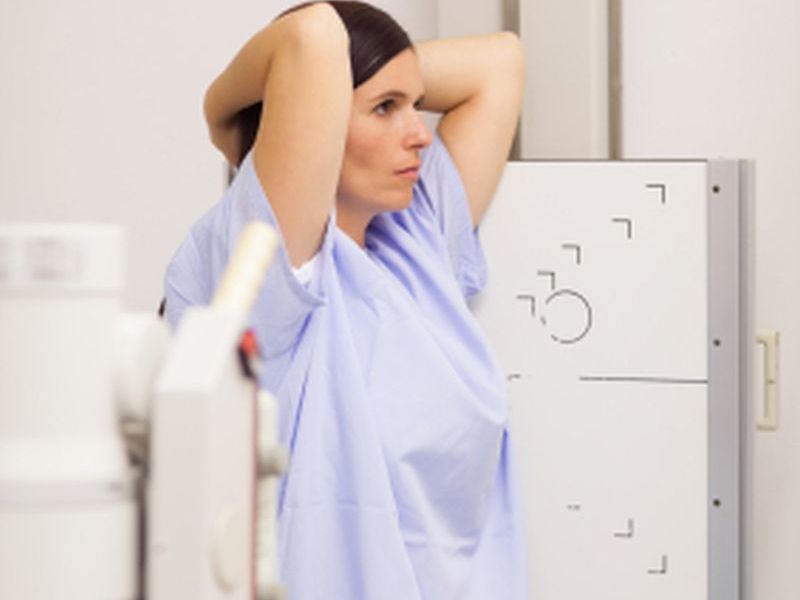Device Spots Lymphedema Early in Breast Cancer Patients, to Help Stop It
By Serena GordonHealthDay Reporter

THURSDAY, May 2, 2019 (HealthDay News) -- An easy-to-use, noninvasive device can detect early signs of the cancer complication known as lymphedema, a new study reports.
Lymphedema is the buildup of fluid in the body's tissues when a part of the lymph system is damaged, as can happen in cancer care, according to the U.S. National Cancer Institute (NCI).
The fluid causes swelling, usually in the arms or legs, and can be severe enough to limit range of motion in an affected limb.
Detecting lymphedema sooner can give doctors a chance to intervene when it's possible to stop development of this chronic, painful and potentially debilitating condition.
Researchers found that when they used a bioimpedance spectroscopy device after breast cancer surgery, the risk of lymphedema dropped by nearly 70%. The device uses slight electrical currents to measure fluid volume in body tissue.
"Bioimpedance spectroscopy takes about a minute to do, and the device takes up the space of a scale. If you used this every time you saw a breast cancer patient for an appointment, you would know if they're starting to get into trouble," said study lead author Sheila Ridner. She directs the Ph.D. in Nursing Science Program at the Vanderbilt School of Nursing in Nashville, Tenn.
Ridner said there are several causes of lymphedema, including surgery, trauma, radiation, obesity, genetics and some types of chemotherapy.
"It's hard to predict with 100% accuracy who will get lymphedema," she said.
The condition often occurs in women who have had lymph nodes removed from the underarm area along with breast cancer surgery, according to the NCI.
Treatment includes wearing compression garments or bandages to prevent fluid buildup, weight loss, a special type of massage and some light exercises.
The study included just over 500 patients who completed at least a year of follow-up. All had had breast cancer surgery -- either with or without lymph node involvement. The average age was 59 and 77% of the women were white. Almost 57% had stage 1 cancer; 39% had stage 2 or 3 breast cancer.
The women were randomly assigned to testing with either a tape measure (to detect swelling through increased size) or with bioimpedance spectroscopy. Ridner said the device is painless and can also detect body fat and bone mass.
Just 5% of women who had bioimpedance spectroscopy eventually needed complex interventions for swelling, compared to nearly 15% of women who had tape-measure surveillance.
Dr. Lauren Cassell, chief of breast surgery at Lenox Hill Hospital in New York City, said despite surgical advances, lymphedema is still a big concern. She wasn't involved in the current research.
"Breast cancer-related lymphedema remains one of the most challenging problems we face in patients undergoing treatment for breast cancer," Cassell explained. "Once a patient develops swelling of the arm, it becomes almost impossible to eliminate it. We can only hope to keep it under control."
Cassell said identifying early swelling looks promising for preventing long-lasting lymphedema.
"Using a tape measure is just not as sensitive as the use of bioimpedance spectroscopy," she said. "This study suggests that following these patients closely in the immediate postoperative period with bioimpedance spectroscopy may help us avoid significant lymphedema and its subsequent complications."
The study is scheduled to be presented Thursday at the American Society of Breast Surgeons' meeting, in Dallas.
Findings presented at meetings are typically viewed as preliminary until they've been published in a peer-reviewed journal.
More information
The U.S. National Cancer Institute has more about lymphedema .

The news stories provided in Health News and our Health-E News Newsletter are a service of the nationally syndicated HealthDay® news and information company. Stories refer to national trends and breaking health news, and are not necessarily indicative of or always supported by our facility and providers. This information is provided for informational and educational purposes only, and is not intended to be a substitute for medical advice, diagnosis, or treatment.

